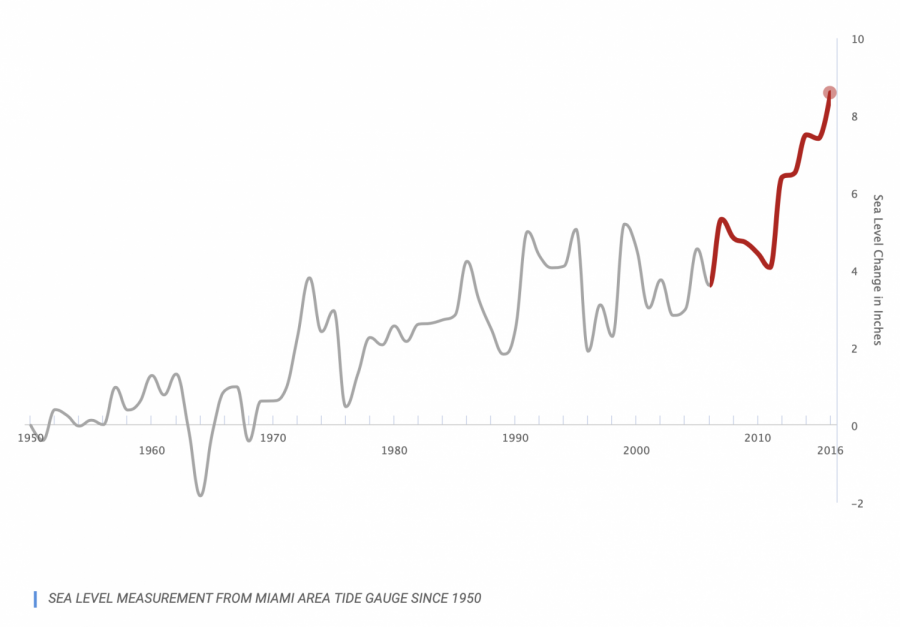Miami, The Next Atlantis?
November 8, 2021
As global sea levels increasingly rise due to human-caused global warming, Miami, one of the nation’s coastal cities and home to many, faces indefinite threats to their future existence.
Miami’s penetrable limestone bed frame filters rising waters through the ground, provoking extreme flooding during high tides and risking the betterment of local septic systems.
According to the Miami-Dade County’s Office of Resilience, sea levels are estimated to grow ten to seventeen inches higher than those measured in the year 2000.
Miami is my home and I find it terrifying to think that this city, one I’ve grown up in, is susceptible to such dangers. The dangers dismally caused by the egotism of our hands.
Although these efforts are extremely pressing and need to be done sooner rather than later, my mind finds it difficult to simply forget about the lasting harm we have caused to such bountiful earth, one that constantly provides for us yet we selfishly take for granted.
Close to unrepairable, the Earth’s ozone layer has been gravely harmed, commonly referred to as ozone depletion, by means of human activity such as harmful halogen source gas emissions.
In 2017, NASA reported that the ozone layer was the weakest it had ever been since 1988 due to warm stratospheric conditions, one that was expected to ameliorate around 2070.
But, there is still hope even amid all this damage, as organizations like such as the United Nations Environmental Programme continue to support the 1987 international agreement titled the Montreal Protocol on Substances that Deplete the Ozone Layer, which was designed to stop the production and import of ozone-depleting substances.
The ozone layer’s depletion increases the ultraviolet light affecting Earth’s surface, which henceforth results in a variety of issues such as damaging varying life forms such as phytoplankton, basic nutrition for marine life, and rapid melting sea ice located in the Arctic and increasing its sea levels.
Miami-Dade County’s Office of Resilience mentions that they are working, in light of shocking statistics, to strengthen infrastructure, plan for more resilient communities, and enhance natural protection.
These infrastructure improvements have been a pressing topic following the collapse of the twelve-story Surfside building, raising questions on the vulnerability of South Florida to rising seas.
“I’m honestly scared that people won’t start caring until it’s too late,” said senior Camila Young, founder of Relief After Disaster, a nonprofit organization that advocates for natural disaster and disease relief.
It’s difficult to see that while local governments are hoping to prevent the issue at the moment, I find that they are not addressing the issue at large: human ignorance and selfishness.
Lack of care for those around them, society has continuously placed their own needs before those of the greater good.
Yet, even in light of this societal issue, we can find hope in our world leaders in important events such as the 2021 United Nations Climate Change Conference, which is occurring from Oct. 31- Nov.12, brings together a variety of countries, their leaders, and how they’re planning to tackle the ongoing climate crisis plaguing our world.
Click to see the 3D Sea Level Rise Viewer by Miami-Dade County.


